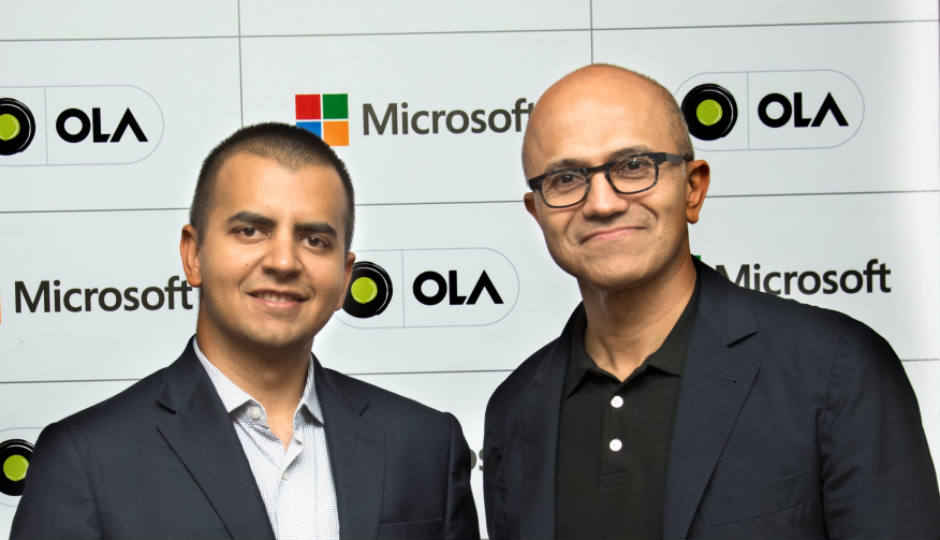Ola announces new connected car platform in partnership with Microsoft

The new platform will bring Internet-enabled cars that can aid navigation, mirror tasks and show car maintenance details.
Indian cab aggregator and ride sharing service, Olacabs has announced a partnership with Microsoft to build a new connected car platform. Announced yesterday, the two companies will collaborate along with car manufacturers to bring Internet connectivity to cars, and simultaneously use them to promote more in-car entertainment services and maintenance features.
With this new partnership, Olacabs will use Microsoft's Azure cloud platform for its Ola Play in-cab infotainment service. For the end-user, the service will use Microsoft's AI and IoT tools to bring cloud-based productivity services such as Office 365 and Skype for Business to be used during cab journeys. The system will also integrate Microsoft's Cortana AI assistant for voice commands to control the Ola Play interface. The new connected car platform will also help seamlessly integrate services such as navigation, where the route of journey can be directly fed in from the customer's phone. The existing entertainment services that are already present in Ola Play will also be retained.
Alongside, the new connected car platform will help optimise car performance by integrating vehicle diagnostics to the interface, alongside providing assisted car maintenance features. Further explaining the features, Olacabs stated in a statement, "The advanced telematics platform will transform the car into a high-performing, intelligent vehicle, capable of assessing fuel efficiency, engine performance, and driver performance. It will also enable smarter navigation and predict breakdowns, enhancing safety and security while creating new business models and opportunities."
The present connected car platform will be used to collect, analyse and learn from data regarding on-road driving characteristics and rider preferences. Olacabs states that this will help the company better customise its services and business models in line with what's on demand. In future, this platform will be used to provide advanced safety and driver assistance services for cabs in the ride-sharing model.




